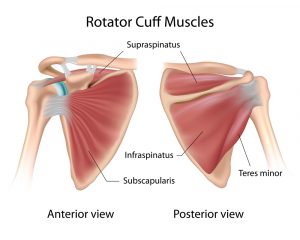[fusion_builder_container hundred_percent=”no” equal_height_columns=”no” menu_anchor=”” hide_on_mobile=”small-visibility,medium-visibility,large-visibility” class=”” id=”” background_color=”” background_image=”” background_position=”center center” background_repeat=”no-repeat” fade=”no” background_parallax=”none” parallax_speed=”0.3″ video_mp4=”” video_webm=”” video_ogv=”” video_url=”” video_aspect_ratio=”16:9″ video_loop=”yes” video_mute=”yes” overlay_color=”” video_preview_image=”” border_size=”” border_color=”” border_style=”solid” padding_top=”” padding_bottom=”” padding_left=”” padding_right=””][fusion_builder_row][fusion_builder_column type=”2_3″ layout=”1_1″ background_position=”left top” background_color=”” border_size=”” border_color=”” border_style=”solid” border_position=”all” spacing=”yes” background_image=”” background_repeat=”no-repeat” padding_top=”” padding_right=”” padding_bottom=”” padding_left=”” margin_top=”0px” margin_bottom=”0px” class=”” id=”” animation_type=”” animation_speed=”0.3″ animation_direction=”left” hide_on_mobile=”small-visibility,medium-visibility,large-visibility” center_content=”no” last=”no” min_height=”” hover_type=”none” link=””][fusion_title hide_on_mobile=”small-visibility,medium-visibility,large-visibility” class=”” id=”” content_align=”left” size=”1″ font_size=”” line_height=”” letter_spacing=”” margin_top=”” margin_bottom=”” margin_top_mobile=”” margin_bottom_mobile=”” text_color=”” style_type=”default” sep_color=””]
April 2019 Newsletter
[/fusion_title][fusion_separator style_type=”default” hide_on_mobile=”small-visibility,medium-visibility,large-visibility” class=”” id=”” sep_color=”” top_margin=”” bottom_margin=”” border_size=”” icon=”” icon_circle=”” icon_circle_color=”” width=”” alignment=”center” /][fusion_text columns=”” column_min_width=”” column_spacing=”” rule_style=”default” rule_size=”” rule_color=”” hide_on_mobile=”small-visibility,medium-visibility,large-visibility” class=”” id=””]
Top Stories In This Newsletter
The Mystery of Calcium Deposits
Kidney Stones & Nanobacteria Meet our April Client of the Month, Nat
Get ready for the Easter Special
Catch up with Jeremy, Lauren and Antonio, Tina and our newest member, Sam
[/fusion_text][fusion_text columns=”” column_min_width=”” column_spacing=”” rule_style=”default” rule_size=”” rule_color=”” hide_on_mobile=”small-visibility,medium-visibility,large-visibility” class=”” id=””]Please click here to find a PDF version of our April Newsletter[/fusion_text][fusion_text columns=”” column_min_width=”” column_spacing=”” rule_style=”default” rule_size=”” rule_color=”” hide_on_mobile=”small-visibility,medium-visibility,large-visibility” class=”” id=””]The Mystery of Calcium Deposits, Kidney Stones & Nanobacteria
Approximately seven percent of adult men develop renal or bladder stones containing calcium mineral salts. In fact, calcification appears to be a relatively common feature of human disease. Apart from kidney stones, other conditions associated with calcification include:
- Bladder stones
- Dental pulp stones
- Some gall stones
- Salivary gland stones
- Chronic calculous prostatitis
- Testicular microliths
- Atherosclerosis
- Some malignancies
- Some dementias
- Calcific tenditis and arthritis
In some cases, mineralisation can even be life-threatening. Yet surprisingly little is known about why these calcium deposits form. Several studies in the past twenty years have opened up the possibility of nanobacteria causing these deposits and, in the process, creating considerable headaches for the medical community.
What are nanobacteria and why are they of interest?
Nanobacteria are cell-walled microorganisms about a tenth the size of the smallest normal bacteria: around 0.05–0.5 mm in diameter. They are the smallest known type of bacteria and were only discovered in the last couple of decades, in human and cow blood. Nanobacteria have some distinctive properties, including heat resistance and the ability to pass through 0.1-mm sterilization filters. Much of the interest in nanobacteria originated from NASA researchers looking into the rapidly forming nature of kidneys stones in astronauts. It is a relatively new field that is of interest to the scientific and medical community.
What have the key studies found?
Two 1998 studies looked at the problem of calcification in relation to the growth phases of nanobacteria and, in particular, kidney stones. One found that all growth phases produced the mineral carbonate on their cell envelope at neutral pH (going against the conventional wisdom that elevated pH helps to cause the calcification):
“The biomineralization in cell culture media resulted in biofilms and mineral aggregates closely resembling those found in tissue calcification and kidney stones.”
A second study found that nanobateria “produce sufficient calcium apatite to initiate pathologic calcification and stone formation.” In 2005, nanobacteria were found to multiply five times faster in low-gravity conditions than in normal Earth gravity, again highlighting their potential role in forming kidney stones in astronauts.
The hardiest of all bacteria?
The extracellular calcification creates a protective shell that allows nanobacteria to survive conditions that would eliminate normal bacteria. It makes them especially hardy and resistant. And while renal stones have never been considered to have an infectious etiology, the carbonate apatite released by nanobacteria could make this a possibility. The mechanism by which nanobacteria induce the mineralisation is not known but this emerging area of science is likely to shed more light on the nature of disease in the future, with more studies on the presence of nanobacteria in human blood. In fact, nanobacteria could be behind many health problems. And, with their general resistance to antibiotics (due to their calcified shell), this could present a huge challenge to the medical community.
References:
Kajander E.O & Ciftcioglu N. Nanobacteria: An alternative mechanism for pathogenic intra- and extracellular calcification and stone formation. Proc. Natl. Acad. Sci. USA Vol. 95, pp. 8274–8279, July 1998 Medical Sciences Dennis A. Carson. An infectious origin of extraskeletal calcification. Proc. Natl. Acad. Sci. USA Vol. 95, pp. 7846–7847, July 1998 Mathew G, McKay D., Ciftcioglu N. Do Blood-borne Calcifying Nsnoparticles Self-Propagate? International Journal of Nanomedicine 2008:3(2) 265-275.[/fusion_text][/fusion_builder_column][fusion_builder_column type=”1_3″ layout=”1_3″ spacing=”” center_content=”no” link=”” target=”_self” min_height=”” hide_on_mobile=”small-visibility,medium-visibility,large-visibility” class=”” id=”” background_color=”” background_image=”” background_image_id=”” background_position=”left top” background_repeat=”no-repeat” hover_type=”none” border_size=”0″ border_color=”” border_style=”solid” border_position=”all” border_radius=”” box_shadow=”no” dimension_box_shadow=”” box_shadow_blur=”0″ box_shadow_spread=”0″ box_shadow_color=”” box_shadow_style=”” padding_top=”” padding_right=”” padding_bottom=”” padding_left=”” margin_top=”” margin_bottom=”” animation_type=”” animation_direction=”left” animation_speed=”0.3″ animation_offset=”” last=”no”][fusion_blog layout=”large” blog_grid_columns=”” blog_grid_column_spacing=”” blog_masonry_grid_ratio=”” blog_masonry_width_double=”” equal_heights=”no” number_posts=”6″ offset=”0″ pull_by=”category” cat_slug=”” exclude_cats=”” tag_slug=”” exclude_tags=”” orderby=”date” order=”DESC” thumbnail=”yes” title=”yes” title_link=”yes” content_alignment=”” excerpt=”” excerpt_length=”10″ strip_html=”yes” meta_all=”yes” meta_author=”yes” meta_categories=”yes” meta_comments=”yes” meta_date=”yes” meta_link=”yes” meta_tags=”yes” scrolling=”pagination” grid_box_color=”” grid_element_color=”” grid_separator_style_type=”” grid_separator_color=”” padding_top=”” padding_right=”” padding_bottom=”” padding_left=”” hide_on_mobile=”small-visibility,medium-visibility,large-visibility” class=”” id=”” /][/fusion_builder_column][/fusion_builder_row][/fusion_builder_container]

